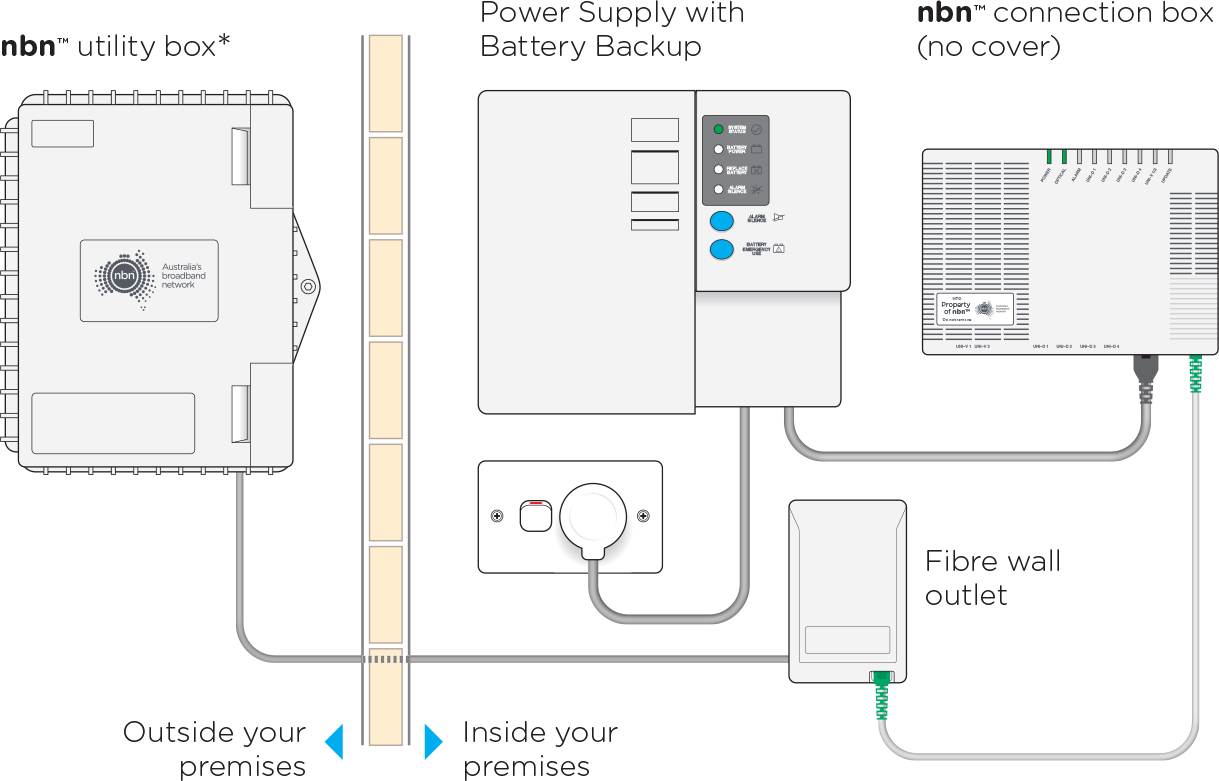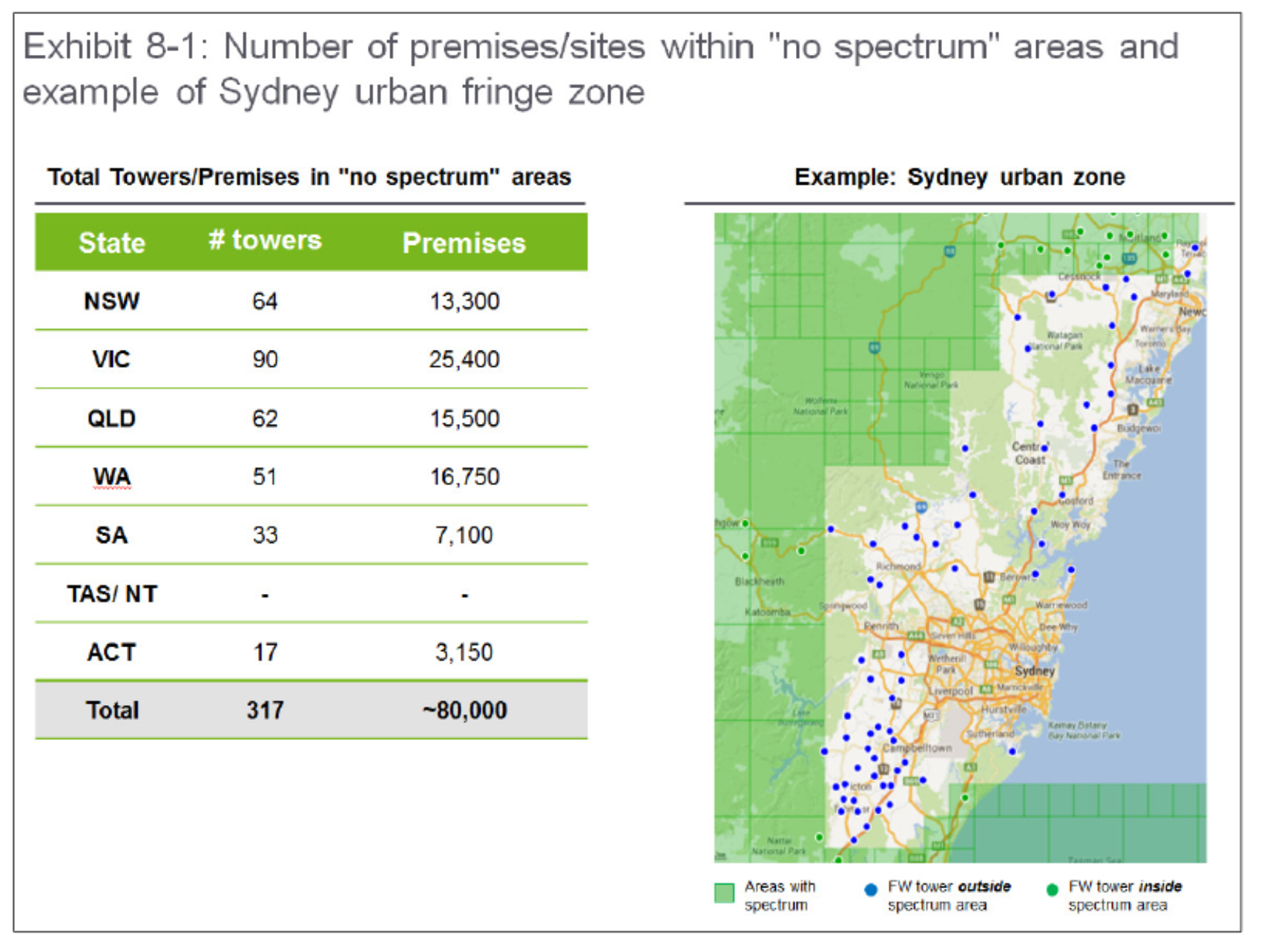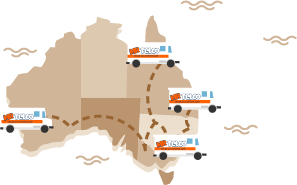NBN Explained #1 Lesson Technology, Availability + Speeds.
Posted at 21/07/2016 10:01pm

NBNs a super-hot topic at the moment, NBN this and NBN that, “oh the NBN is so fast” or “the NBN is so slow”. So much information, theories and supposition seems to be thrown up in the air around this term, which I’m sure leaves many curious minds and people sniffing it, hearing it, wanting it however never even had the chance of touching it or knowing much about it.
In fact, next time your huddled around a group of friends, or at lunch with colleagues, ask any of them, “What is the NBN?”. Their reply, most probably one word, “fibre”, or if that particular individual swallows themselves in newspaper headlines (or googled it, ah, who seriously reads newspapers these days) may also reply “FTTH” (Fibre to the Home).
Whichever individual replies with this ridiculous answer, I guarantee you that particular person will go prancing home that evening, feeling confident of their counsel, grabbing the biggest and shiniest spoon out of the kitchen drawer to then spooning extra cream topping on their freshly cooked piping hot oven baked apple pie, thinking they’ve fulfilled a fantastic deed and advised you with factual helpful information today.
Their advice to you however and sorry to say, is nothing but uneducated and stupidly INCORRECT (well just not the whole story).
Now let’s picture this scenario, if this was a game of Chinese whispers then the whole town, city then country is now spreading this uneducated BS.
Let’s look at things from a different perspective, more from a technical one, but I’ll stay on the low, and keep it somewhat down to earth for you.
Close your eyes (I’m joking) I want you to from now on, picture the word NBN as a brand name only, now this brand name has NO, did you understand, NO correlation between ONE speed nor ONE technology. However, made up of multiple speeds, and multiple technologies which NBN manipulate with the words ‘NBN Speed Tiers’ making you think you’ve always got the choice or they’ve made the top tier speed 100/40Mbs readily available to you, this is also BS.
Putting things into perspective, lets imagine NBN is say ‘Nike’, which you’ll quite regularly hear people use the expression, oh, he’s wearing a pair of Nike(ies). Now, this here tells us one thing, we know what brand of shoes that particular person is wearing, but we don’t know what style or size they are.
Now, this goes for the same with the NBN. The NBN comes in different styles (technologies) and sizes (speeds). So, hoping you really understand that simple analogy. The NBN is simply a brand name.
Now, your next question is probably, why are there different types of NBN technologies and speeds?
The answer to that is quite simple. Let’s put your student hat on and briefly look into Australian geography. Australia as a whole, is super spread out, over 7.692 million km² and the terrain varies from high density CBD living such as Sydney, then out to the Blue Mountains then little country towns such as Blackbutt (you’ve probably never heard of it) located in Queensland, which has a population of 1055 people.
It was back in April 2009 when the Rudd government announced that it would establish a separate company to build the NBN, and provide with up to 90 percent of Aussie homes, businesses and schools access to internet of up to 100 megabits per second download speed.
Yes, this means little country towns in the middle of whoop whoop are going to have a better chance than ever of being connected to the internet via the NBN.
Now, as Australia is such a large mass of land, this poses a problem in terms of making a commercially viable decision to use the same technology rolled out to say connect largely populated areas such as Sydney, Melbourne and Brisbane as the bush towns thus, they thought of viable technologies which would be somewhat similar in speed, performance and reliability and offer different solutions, for example their delivery methods are basically over Fibre, Copper, Fixed Wi-Fi and Satellite which of course each come with their good points and limitations too, each respective to each other.
Many users who opt in, or are cutover during the NBN rollout process will have high expectations of super fast NBN download speed and stability, only to find out that the NBN technology rolled out within that particular area, was in fact was Fixed WIFI or VDSL2 type connections, which you may not see too much difference compared with your standard ADSL2 connection currently been in operation well over 15 years now.
QUICK SIDENOTE:
If you’re looking to purchase a new home, should you buy in a FTTH or Fibre delivery area? OH YES YOU SHOULD! Frankly, if I was a new home buyer, I would certainly take that into consideration during the weighing up of pros and cons of purchasing your dream property and probably offer an extra 10k on top of the purchase price to secure the deal. I’m sure most people would understand.
If you’re thinking about purchasing a property and consider yourself to be spending a considerable amount of time, 10-20 years and potentially growing a family, my recommendation to you would be to check:
a) NBN is available within your area using NBN checker
b) What technology is being utilised within the NBN’s rollout plan
The last thing you want to do, if your household is heavily reliant on fast speed internet and constant streaming is to purchase a property where constant download struggles will present themselves, or especially if you’re within an area only supplying fixed wifi NBN and have weather affected internet that constantly plays up. Remember the days, of Austar Satellite that cuts out during heavy storms? Yes, that also will happen with your fixed wifi NBN WiFi connection in some situations. Of course there are error correction mechanisms but I’m not going to delve into a technical debate right now.
In short: Buying a house? Make sure you buy in an area utilising FTTH technology for best download speed and reliability. That’s where fibre is delivered into your home or premises.
NBN Technologies – What NBN technologies are available and which ones are available in my area?
As mentioned earlier, NBN being the “brand” has multiple technologies delivering NBN services to various parts of Australia. In order to deliver customer internet connections, the NBN incorporate the following technologies within their Network.
We recommend you look-up your residential street address on NBN’s availability checker, however my below overview should provide you with enough background information and knowledge surrounding what the technology represents once you identify which NBN type will be servicing your street, suburb or city.
Fibre (FTTH) – Fibre delivery is the most commonly known method for providing the internet to your home or business, this technology uses what’s call GPON and its physical attributes are one of a thin glass fibre that gets installed underground all the way from the NBN Node (aggregator), which generally are housed within the Telstra Exchange buildings located within your suburb, and basically travels all the way through many pits, pipes, until it reaches the side of your house.

Once the fibre has been delivered to your home, you’ll probably notice a greyish/cream box on the side of your garage, this is where the NBN technician will install what’s called a PCD (premise connection box). This box, houses the connection which then leads inside your house where you’ll find your NTD (network termination device) and optional battery backup unit. In short, the grey box (PCD) is a fibre termination point or known also as an FTP which creates a separation from the NBN network, and moreover your internal wiring.
The upside to having a PCD on the side of your house? Let’s say you’ve had a renovation or your dog was chewing on the internal fibre connecting your NTD, by having that splice/connection point inside the PCD means you would not have to replace the whole fibre path from the NTD back down the street which means when you engage a telecommunications internet repairs contractor or engineer to resolve your line faults, it’s going to be less painful for the technician and saving you money.
Of course your Internet Service Providers responsibility ends at the NTD or NBN Box, so any NBN cabling or phone and internet cabling past that point remains the responsibility of the customer. For example you might like to relocate your existing telephone handets or connect your ISP's modem/router into another room.
Speed Tier Rating: Provides customers access speeds of 100 Mbps download and 40 Mbps upload over NBN fibre.
FTTC / FTTB / FTTN (VDSL2) - These other FTTX delivery methods are a slightly different technology, instead of delivering the fibre optic cable directly to the side of your home, these ones are actually delivered through your normal copper (existing cabling). Except, instead of your traditional copper cabling heading all the way back to a MUX in the Telstra Exchange, its only heading down to your basement (FTTB) if you reside within an apartment block or to your curb if you’re within a house (FTTC or FTTN).
Shortening the copper cabling path or distance between your modem and the MUX/NODE by bringing the NODE closer to your home allows the NBN to achieve higher speed to the end customer.
Next time you hear the abbreviations FTTC / FTTB & FTTN, I want you to think ADSL but on steroids! What I mean by that is, ADSL has the ability to deliver speeds up to 100mb download and beyond, but there was a problem and let me explain.
The reason ADSL2 technology was capped at 24mb/s download was because when the makers (simple terms) of the technology tried to achieve faster speeds they found that the stronger the signal and higher transmission rate they forced down the cable actually caused what’s called “cross-talk”, and to explain in laymen’s terms, “cross talk” is when you’ve got a high level of signal traveling over a cable and it jumps from your internet line (copper line) to say your neighbours line, as it travels down the street from the Exchange to your house. This causes errors and problems and interference and is a commonly known flaw with RF transmission over copper cabling.
In order to rectify the problems caused by ‘cross talk’, a slightly newer or enhanced technology was adopted called vectoring and it’s fundamentally the same technology used in noise cancellation headphones which reduces the amount of cross talk and improves performance at the same time (ITU-T G.993 is the standard for all you tech buffs).
VDSL stands for and means Very-High-Bit-Rate Digital Subscriber Line and has adopted the vectoring technology mentioned above, also has the ability to reach download speeds of up to 250mb/s over twisted pair copper, however that said, the particular speeds adopted by ISP’s and the NBN are defined within a standard or specific Profile.
VDSL2 Profiles Available:
8a, 8b, 8c, 8d, 12a, 12b, 17a (commonly used within Australia), 30a, 35b.
Speed Tier Rating: VDSL2 provides customers access speeds of 80 Mbps download and 20 Mbps upload over copper however realistic results have been taken that the average user will experience download speeds of 25-47 Mbps downstream.
Fixed Wireless NBN - Fixed wireless NBN in simple terms operates very similar to how mobile phones operate. For example, you have an antenna installed on your home’s roof or awning, which talks to a nearby base station located within an NBN shelter or enclosure using radio signals.
How it works, your home will be fitted with an external antenna dish mounted on your roof or awning, whichever is the best position whilst maintaining direct line-of-sight with NBN’s antenna, the signal will shoot across to NBN’s antenna, down the feeder cabling and into the base station, now the base station will convert the radio signals, into electrical or optical signal and into NBN’s upstream node, network and equipment.
Of course, there are certain situations where your fixed wireless signal may drop out, however mechanisms are now built into wifi technology like QAM (Quadrature Amplitude Modulation), QOS and other features to assist with error correction. I’m not going to go into that right now, however, I might touch base in another fixed wireless NBN article.
What speeds can you expect to achieve using NBN’s fixed wifi solution? Currently you can achieve up to 25/5Mbps which is slightly better than typical ADSL2+ type services, however it’s probably better than your other alternates in your location, which may have been nothing or forced to use Optus Satellite 2/2Mbs at a super expensive rate.
The technology NBN uses is called TD-LTE (Time Division) technology that operates in the 2.3GHz spectrum band and optional spectrum which is currently unused in the 3.4GHz spectrum.
These spectrums are only covering regional and remote areas and purchased from AUSTAR in February 2011 for approximately $120 million.

If you didn’t know, Optus own the same spectrum outside of the remote and regional areas, so at this stage NBN is not offering fixed wireless in more urban edge areas.
Speed Tier Rating: Fixed Wireless NBN provides customers maximum access speeds of 25 Mbps download and 5 Mbps upload via transmission method of radio signal.
Conclusion:
Listen, I really hope you enjoyed reading this article and has provided you sufficient information and understanding into internet connections delivered from the NBN Network.
Should you have any questions relating to this article, or end up having issues with your NBN internal wirings, modems or connections, reach out to our telephone or internet repair technicians or hey, even any question related to anything telco you needed answering. Feel free to ask us for any information, as our team services all capital cities within Australia, so just pick up the phone and give our team a hoy!


